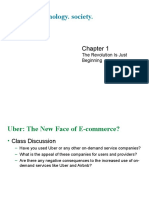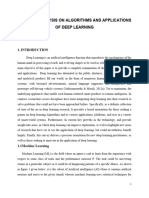0% found this document useful (0 votes)
11 views12 pagesImpact of Technology On Ecommerce
The document discusses the significant impact of technology on e-commerce, highlighting advancements such as AI, blockchain, and mobile commerce. It covers trends like personalized marketing, secure transactions, and the evolution of mobile payment options, as well as the role of augmented and virtual reality in enhancing customer engagement. Overall, technology has transformed the shopping experience, making it more efficient and accessible for consumers.
Uploaded by
Tejas ChodankarCopyright
© © All Rights Reserved
We take content rights seriously. If you suspect this is your content, claim it here.
Available Formats
Download as PPTX, PDF, TXT or read online on Scribd
0% found this document useful (0 votes)
11 views12 pagesImpact of Technology On Ecommerce
The document discusses the significant impact of technology on e-commerce, highlighting advancements such as AI, blockchain, and mobile commerce. It covers trends like personalized marketing, secure transactions, and the evolution of mobile payment options, as well as the role of augmented and virtual reality in enhancing customer engagement. Overall, technology has transformed the shopping experience, making it more efficient and accessible for consumers.
Uploaded by
Tejas ChodankarCopyright
© © All Rights Reserved
We take content rights seriously. If you suspect this is your content, claim it here.
Available Formats
Download as PPTX, PDF, TXT or read online on Scribd
/ 12
























































































